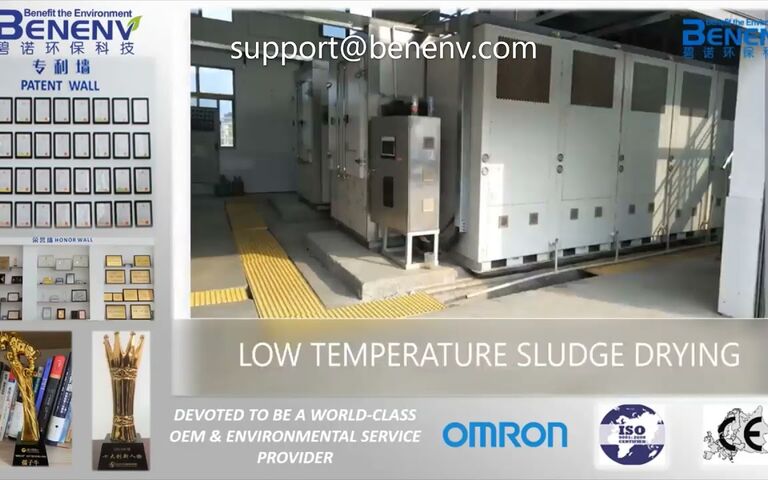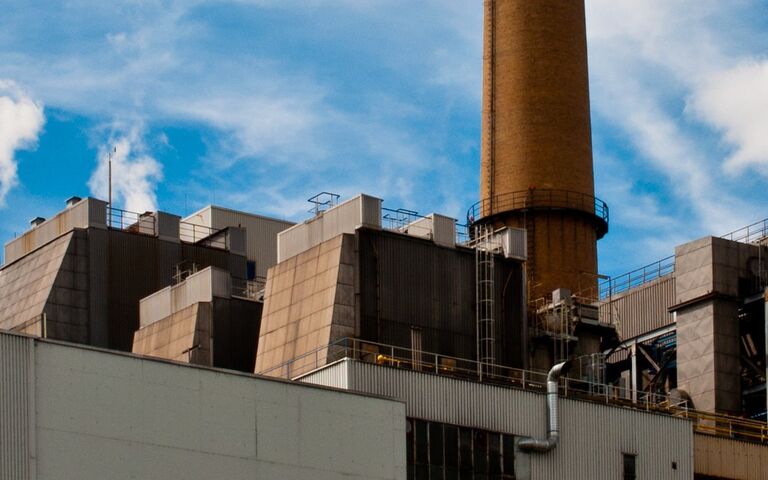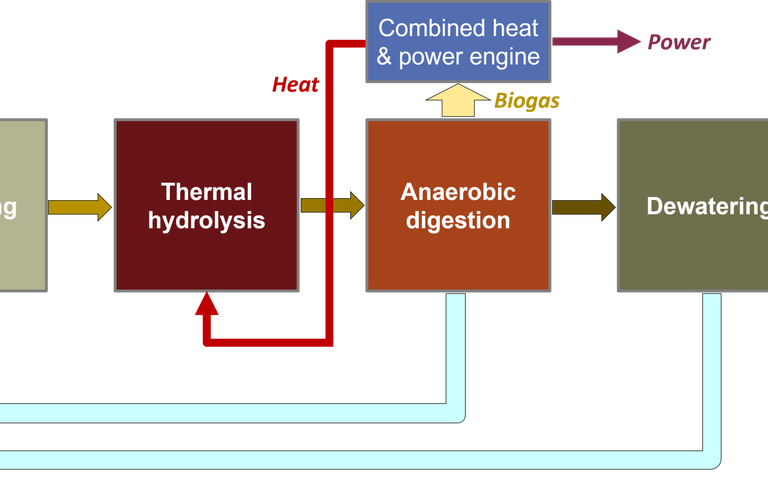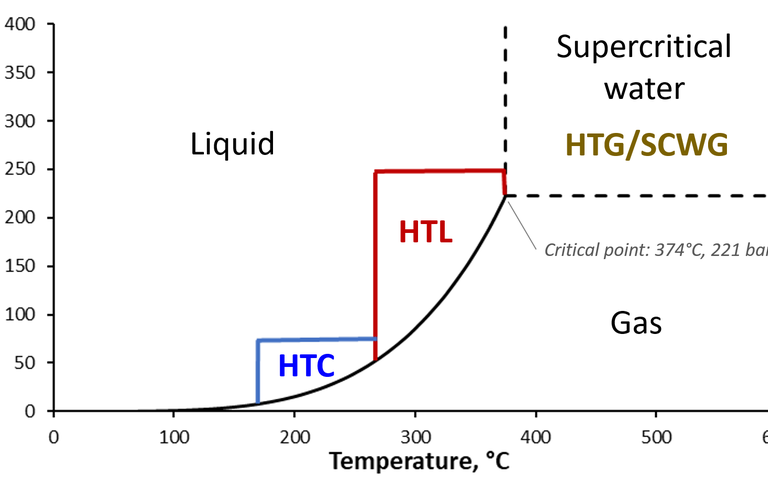Sludge treatment − gasification

How gasification works
Gasification is an extension of the pyrolysis process for thermochemical treatment of sludge, with the conversion taking place in a partial reducing atmosphere at higher temperatures than those used for pyrolysis. Whereas pyrolysis gives multiple products, some which are liquid and form a bio-oil, gasification aims to completely convert the carbonaceous content to a solid ash and a clean combustible gas product for use locally.
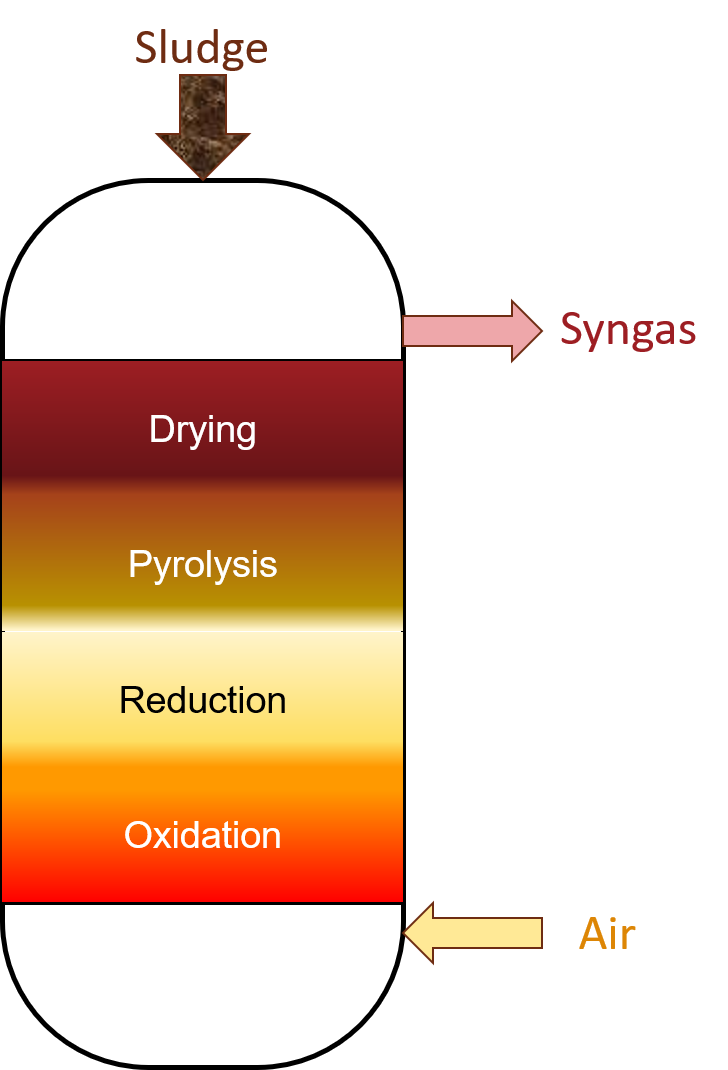
Gasification represents the final stage of a multi-stage process taking place over the length of the gasification reactor. At the gasifier entrance, within a temperature range of 70 to 200 °C, the sludge is dried. The dried material then undergoes pyrolysis/thermal degradation at 350−500 °C. Under these conditions, char, fly ash, water vapours and a mixture of condensable, high molecular weight organic compounds and non-condensable gases are formed.
Example of a commercial biomass gasification process, Valmet
The final gasification step, in which the pyrolysis products are converted to the desired combustible gas, demands a higher temperature. The heat required for this comes from partial oxidation reactions, such as carbon oxidation to carbon monoxide and dioxide. These reactions are highly exothermic, raising the temperature to up to 1100 °C.
Capital and operating costs for gasification are similar to those for pyrolysis, such that the principal difference between the two processes lies in the product value. The fact that gasification produces a single, clean product can make it more attractive than pyrolysis for installation in a wastewater treatment works since the gas is easier to reuse directly than is a combination of gas and oil. The restriction on the product to local use is not usually problematic provided gas-fed combined heat and power (CHP) engines are located on site.



